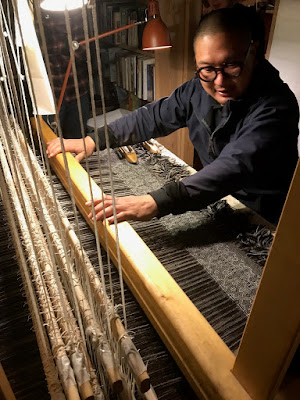That looks like a finished (hemmed) edge to me. If you can check the side(s) of a piece of fabric that isn't hemmed, look for an edge like the one in my pic. Its even but not perfect, and may have slight puckers or bumps. I'm a beginning weaver and I can only now appreciate the level of skill that it takes to produce a 'clean' selvage edge. I had the good fortune to 'inheret' some old linens when my partner sold his mother's home in Slovakia. We had no room in our suitcases (they weigh a ton - another clue that its linen and not cotton) so I convinced him to mail home 2 boxes of linen sheets and tablecloths. He REALLY thought I'd lost it.

Now that we sleep in them, he thinks mailing them wasn't such a bad idea. The pictures are of one hand loomed sheet that is amazing to my unskilled hands.
Your pics and story of visiting your friend's home with her beautiful embroidery is very touching. Her work is really wonderful! I hope the other pieces in the trunk are just as lovely.






 Now that we sleep in them, he thinks mailing them wasn't such a bad idea. The pictures are of one hand loomed sheet that is amazing to my unskilled hands.
Now that we sleep in them, he thinks mailing them wasn't such a bad idea. The pictures are of one hand loomed sheet that is amazing to my unskilled hands.





